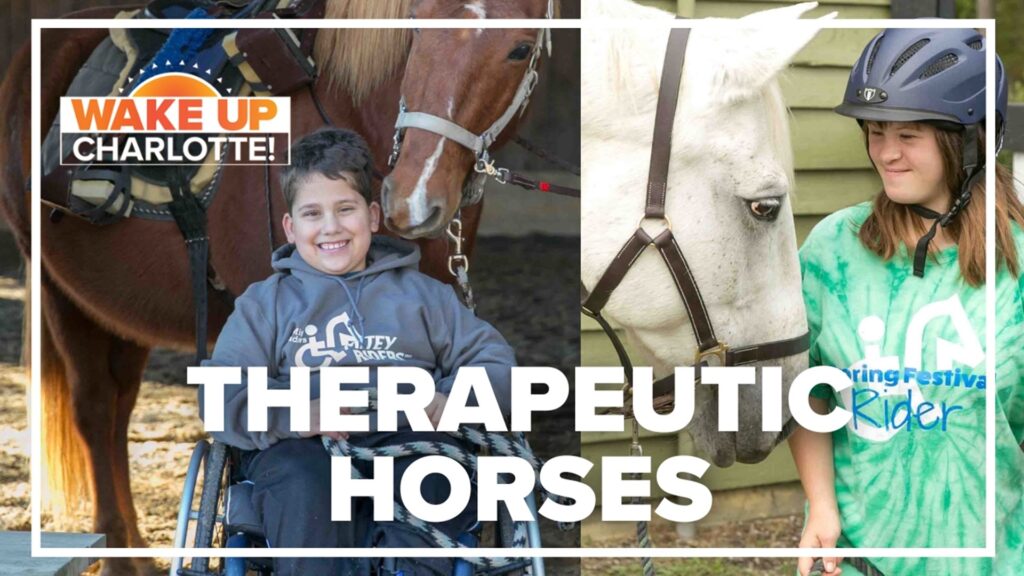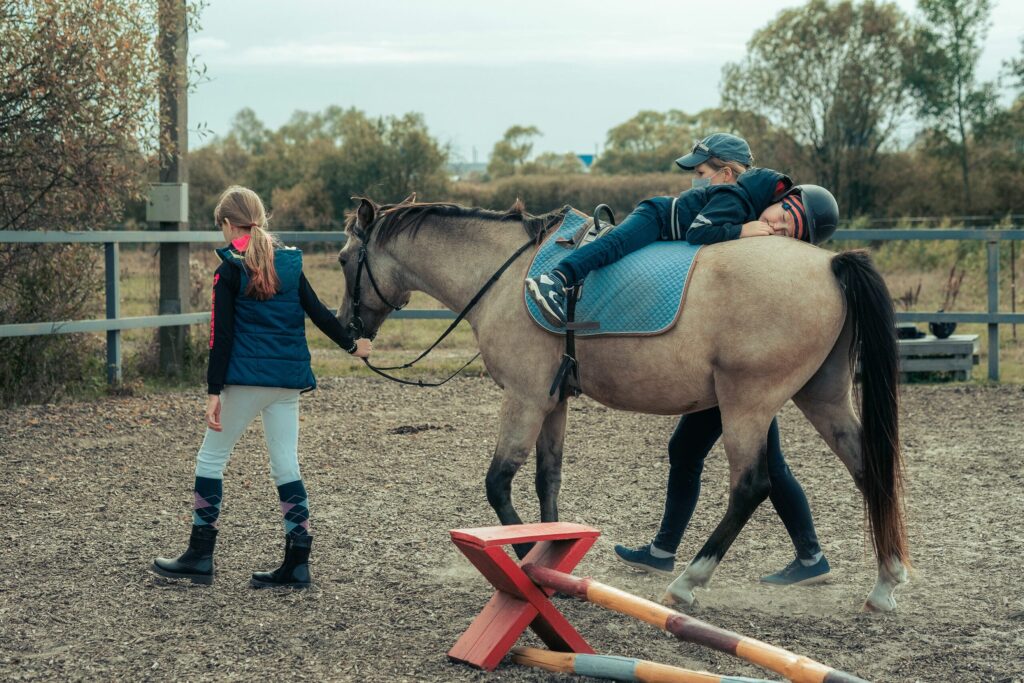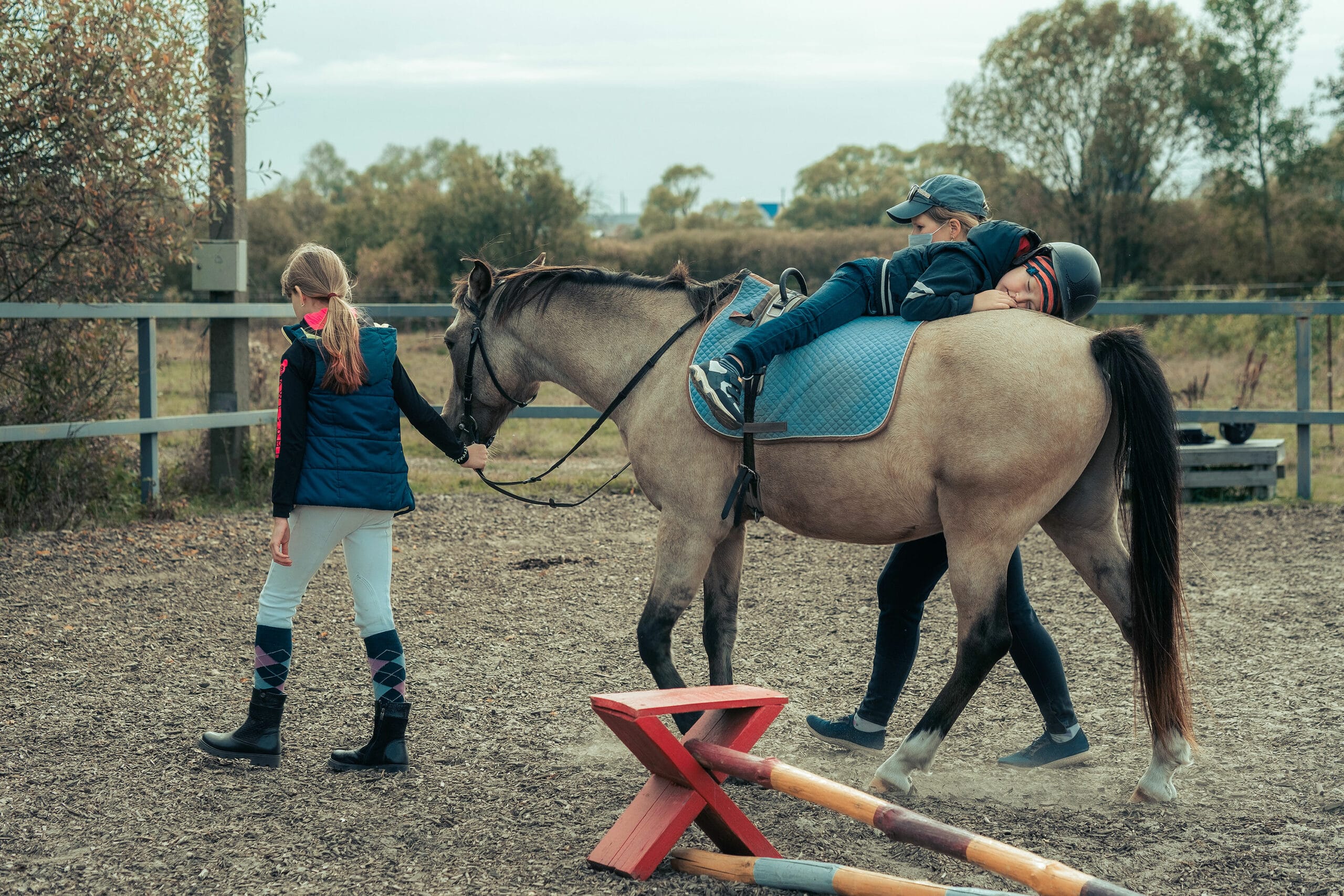Have you ever wondered how horseback riding can be a form of therapy for people with disabilities? It may seem like an unlikely combination, but the benefits can be truly remarkable. In this article, we’ll dive into the world of horseback riding as a therapeutic activity and explore how it can positively impact individuals with disabilities. From physical improvements to emotional well-being, there’s so much to learn about this unique form of therapy.
One of the main reasons horseback riding is beneficial for people with disabilities is the physical aspect. When you’re on a horse, your body is constantly in motion, engaging your core muscles and promoting balance and coordination. This can be especially beneficial for individuals with conditions such as cerebral palsy or spina bifida, as it helps improve their muscle strength and control. But the benefits don’t stop there – horseback riding can also improve posture, flexibility, and overall range of motion. In fact, research has shown that individuals with mobility impairments who participate in therapeutic horseback riding experience significant improvements in their physical abilities. So, if you’re interested in learning more about how horseback riding can positively impact individuals with disabilities, keep reading – there’s plenty more to discover in this article!
Horseback Riding as a Form of Therapy for People with Disabilities
Horseback riding therapy, also known as equine therapy or hippotherapy, is an innovative approach to rehabilitation and therapy for individuals with disabilities. This form of therapy involves interactions and activities with horses, which can have a profound impact on physical, emotional, cognitive, and social well-being. In this article, we will explore the various benefits of horseback riding therapy, the types of disabilities it can benefit, how it works, the selection and training of therapy horses, qualifications of instructors, safety measures and precautions, success stories, costs and financial assistance, research evidence, finding therapy programs, preparing for sessions, adapting for different disabilities, and the challenges and limitations of this therapy.
Benefits of Horseback Riding Therapy
Physical Benefits
One of the primary benefits of horseback riding therapy is the physical improvement it can provide. The rhythmic movement of the horse stimulates the rider’s muscles and joints, helping to improve balance, coordination, and strength. This can be particularly beneficial for individuals with physical disabilities such as cerebral palsy, multiple sclerosis, or spinal cord injuries. The three-dimensional movement of the horse’s gait replicates the movement of walking, which can help individuals with mobility challenges develop and strengthen their core muscles. Additionally, horseback riding therapy can improve posture, flexibility, and range of motion.
Emotional Benefits
Horseback riding therapy has also been shown to have numerous emotional benefits. The bond and connection between the rider and the horse can create a sense of trust, comfort, and companionship. Interacting with horses can provide individuals with a sense of empowerment, independence, and self-confidence. This can be especially valuable for individuals with emotional or psychological disabilities such as anxiety, depression, or post-traumatic stress disorder. The serenity and calming effect of being around horses and in nature can also reduce stress, improve mood, and enhance overall emotional well-being.
Cognitive Benefits
In addition to physical and emotional benefits, horseback riding therapy can have positive effects on cognitive abilities. The constant communication and interaction between the rider and the horse require concentration, focus, and problem-solving skills. Following instructions from the therapy instructor and engaging in activities with the horse can enhance cognitive processing, attention span, and memory. Moreover, horseback riding therapy can stimulate sensory integration, promote spatial awareness, and improve sensory processing skills.
Social Benefits
Another remarkable aspect of horseback riding therapy is its ability to enhance social skills and social integration. Participating in group therapy sessions or horse-related activities with others can encourage social interaction, teamwork, and the development of meaningful relationships. Individuals with disabilities often feel isolated or excluded, but the inclusive and supportive environment of horseback riding therapy can provide them with a sense of belonging and acceptance. Building connections with horses and fellow riders can boost self-esteem, improve communication skills, and foster a sense of community.
Types of Disabilities Horseback Riding Therapy Can Benefit
Horseback riding therapy can benefit a wide range of disabilities, including physical, developmental, emotional, behavioral, and sensory disabilities. Let’s explore each of these categories:
Physical Disabilities
Individuals with physical disabilities such as cerebral palsy, spina bifida, muscular dystrophy, or amputations can greatly benefit from horseback riding therapy. The movement of the horse helps to strengthen muscles, improve balance, coordination, and posture, and enhance overall physical functioning.
Developmental Disabilities
Children and adults with developmental disabilities like autism spectrum disorder, Down syndrome, or intellectual disabilities can also benefit from horseback riding therapy. The sensory stimulation provided by the horse’s movement helps with sensory integration and can improve motor skills, communication, and cognitive abilities.
Emotional and Behavioral Disabilities
For individuals with emotional and behavioral disabilities such as anxiety disorders, mood disorders, or ADHD, horseback riding therapy offers a unique and effective form of intervention. Interacting with horses can reduce stress, increase self-esteem, and promote emotional regulation and self-control.
Sensory Disabilities
People with sensory disabilities, including visual impairments, hearing impairments, or sensory processing disorders, can find horseback riding therapy to be highly beneficial. The sensory input from the horse’s movement, as well as the tactile interaction with the horse, can aid in sensory integration and stimulate sensory processing and perception.

How Does Horseback Riding Therapy Work?
Horseback riding therapy encompasses various approaches and activities that cater to the specific needs and goals of individuals with disabilities. Here are the main components of horseback riding therapy:
Equine-Assisted Activities
Equine-assisted activities involve interactions with horses in a structured and supervised environment. These activities can include grooming, leading the horse, or participating in horse-related games and exercises. Equine-assisted activities focus on building trust, communication skills, and emotional connections between the rider and the horse.
Therapeutic Horseback Riding
Therapeutic horseback riding, also known as adaptive riding, is the core of horseback riding therapy. During therapeutic riding sessions, individuals with disabilities are placed on horseback while being supported by a team of trained instructors and therapists. The movement of the horse stimulates muscular and sensory responses, improving physical, emotional, and cognitive functioning.
Groundwork Activities
Groundwork activities in horseback riding therapy involve working with the horse from the ground without riding. These activities can include leading the horse, practicing grooming techniques, or teaching the horse specific commands. Groundwork activities help develop trust, build rapport, and enhance communication and leadership skills.
Horse-Related Exercises
Horse-related exercises are specifically designed exercises that target the individual’s therapy goals. These exercises can focus on improving motor skills, coordination, balance, or strength. Examples of horse-related exercises include reaching for objects while riding, engaging in obstacle courses, or performing specific physical movements in sync with the horse’s gait.
Selection and Training of Therapy Horses
The selection and training of therapy horses play a crucial role in the effectiveness and safety of horseback riding therapy programs. Here are some key considerations:
Suitable Horse Breeds
Certain horse breeds are better suited for therapy work due to their temperament, size, and gait. For example, breeds such as the American Quarter Horse, the Icelandic Horse, or the Miniature Horse are often chosen for their calm and gentle nature, as well as their suitability for individuals with disabilities.
Temperament and Character Traits
Therapy horses must possess specific temperament and character traits to effectively work with individuals with disabilities. They should be patient, calm, and responsive to cues. Horses that are easily spooked or resistant to instructions may not be suitable for therapy work.
Specialized Training Programs
Therapy horses undergo specialized training programs to prepare them for the unique challenges and demands of working with individuals with disabilities. Training programs focus on teaching horses to follow verbal commands, respond to cues, and maintain a steady and predictable gait.
Horse-Rider Compatibility
The compatibility between the therapy horse and the rider is essential for a successful therapy experience. Horses are matched with riders based on factors such as size, weight, and the individual’s specific needs and goals. It is important to ensure that the horse’s size and movement are appropriate for the rider’s abilities and comfort.

Qualifications of Horseback Riding Therapy Instructors
The qualifications of horseback riding therapy instructors are crucial in ensuring safe and effective therapy sessions. Here are some key qualifications to consider:
Certifications and Credentials
Therapy instructors should have appropriate certifications and credentials from reputable organizations. Certifications such as the Professional Association of Therapeutic Horsemanship International (PATH Intl.) certification indicate that the instructor has met certain training and qualification standards in the field of horseback riding therapy.
Experience with Disabilities
Therapy instructors should have experience and knowledge in working with individuals with disabilities. They should be familiar with the specific needs, challenges, and goals of different disabilities and have the skills to adapt therapy techniques accordingly.
Horse Handling Skills
Instructors must have strong horse handling skills to safely and effectively work with therapy horses. They should be able to communicate and interact with horses in a calm and confident manner, as well as manage any potential behavioral issues that may arise.
Ability to Develop Individualized Plans
A qualified therapy instructor should have the ability to develop individualized therapy plans for each participant. They should assess the rider’s abilities, set realistic goals, and adapt the therapy techniques to meet the specific needs and preferences of the individual.
Safety Measures and Precautions
Horseback riding therapy involves certain risks and safety considerations that need to be addressed. Here are some important safety measures and precautions:
Horse Safety Guidelines
Therapy horses should undergo regular veterinary check-ups and vaccinations to ensure their health and well-being. They should also receive proper hoof care and be in good physical condition. Horses should be handled and ridden using appropriate safety equipment, including saddles, bridles, and halters.
Safety Equipment for Riders
Riders should wear appropriate safety equipment to minimize the risk of injury. This may include helmets, proper footwear with a heel, and protective vests. In some cases, additional safety equipment such as knee or wrist braces may be necessary.
Risk Assessment and Management
Therapy instructors should conduct thorough risk assessments of the therapy environment to identify potential hazards or risks. They should implement proper risk management strategies, such as maintaining safe riding surfaces, ensuring proper horse and rider matching, and establishing emergency communication procedures.
Emergency Preparedness
It is essential for therapy programs to have emergency protocols in place. This includes having trained staff members on-site who are certified in first aid and CPR. Additionally, access to emergency medical services and transportation should be readily available.

Success Stories of Horseback Riding Therapy
There are numerous success stories and testimonies that highlight the transformative impact of horseback riding therapy. Here are some common success stories:
Improvement in Motor Skills
Many individuals with physical disabilities have experienced significant improvements in their motor skills through horseback riding therapy. They have shown increased balance, coordination, muscle strength, and range of motion, leading to greater independence and functionality in daily activities.
Enhanced Emotional Well-being
Horseback riding therapy has been shown to have a positive impact on emotional well-being. Participants have reported reduced anxiety, improved mood, increased self-confidence, and a sense of accomplishment. The bond with the therapy horse and the supportive environment of therapy sessions contribute to emotional healing and growth.
Boost in Self-Confidence
Participants in horseback riding therapy often experience a boost in self-confidence and self-esteem. As they develop new skills, communicate effectively with the horse, and conquer challenges, their belief in their abilities and potential increases. This newfound confidence can extend to other areas of their lives, leading to improved overall quality of life.
Positive Social Impact
Horseback riding therapy provides opportunities for social interaction, communication, and teamwork. Participants develop meaningful connections with the therapy horses, instructors, and fellow riders. This social engagement fosters a sense of belonging, reduces feelings of isolation, and increases social skills and acceptance.
Costs and Financial Assistance
The costs associated with horseback riding therapy can vary depending on factors such as location, therapy program, and session duration. Here are some considerations regarding costs and financial assistance:
Session Fees and Packages
Therapy programs typically charge session fees based on the duration and type of therapy provided. The fees may cover the cost of the therapy horse, instructors, facilities, and equipment. Programs may also offer package discounts for multiple sessions or long-term therapy plans.
Insurance Coverage
Some insurance plans may cover horseback riding therapy as a form of physical or occupational therapy. It is important to check with your insurance provider to determine coverage eligibility and any specific requirements.
Nonprofit Organizations and Grants
There are nonprofit organizations that offer financial assistance or scholarships for individuals with disabilities to participate in horseback riding therapy. Additionally, there may be grants available through local or national organizations that focus on therapeutic services for people with disabilities.
Fundraising Opportunities
Individuals and families can explore fundraising opportunities to help cover the costs of horseback riding therapy. This can include organizing community events, seeking donations from friends and family, or reaching out to local businesses for sponsorships.

Research Studies and Evidence
Horseback riding therapy has gained recognition and support through research studies and evidence. While more research is needed, existing studies highlight the positive outcomes and benefits of this therapy. Here are some types of research evidence:
Scientific Research Findings
Scientific studies have investigated the physical, emotional, cognitive, and social benefits of horseback riding therapy. These studies often utilize objective measures and assessments to demonstrate the improvements in various areas of functioning.
Case Studies
Case studies provide detailed accounts of individual therapy participants and their progress throughout the therapy process. These studies often include qualitative data such as interviews, observations, and self-reported outcomes, providing valuable insights into the personal experiences and perspectives of individuals receiving horseback riding therapy.
Anecdotal Evidence
Anecdotal evidence refers to personal testimonies and stories from individuals who have experienced horseback riding therapy firsthand. While anecdotal evidence does not have the same scientific validity as controlled studies, it can provide valuable insights into the subjective experiences and perceived benefits of participants.
Comparison with Other Therapies
Research studies have also compared horseback riding therapy with other forms of therapy, such as traditional physical therapy or occupational therapy. These comparative studies explore the unique benefits and advantages of horseback riding therapy in achieving therapeutic goals.
Finding Horseback Riding Therapy Programs
If you or someone you know is interested in horseback riding therapy, there are various ways to find therapy programs. Here are some avenues to explore:
Local Therapeutic Centers
Contact local therapeutic centers or rehabilitation facilities in your area to inquire about horseback riding therapy programs. These centers may offer a range of therapeutic services, including horseback riding therapy.
Online Directories
Online directories and databases specifically dedicated to horseback riding therapy can be valuable resources. These platforms provide comprehensive listings of therapy programs, including contact information, location, specialties, and participant reviews.
Referrals from Physicians and Therapists
Consulting with physicians, therapists, or other healthcare professionals can provide recommendations for reputable horseback riding therapy programs. These professionals may have knowledge of local resources and can help guide you in finding the right therapy program for your specific needs.
Community Organizations
Reaching out to community organizations that focus on disabilities or therapeutic services can provide valuable information and guidance. These organizations may have partnerships or connections with horseback riding therapy programs, making them a valuable resource for finding appropriate options.
Preparing for a Horseback Riding Therapy Session
Before attending a horseback riding therapy session, there are several preparations that can ensure a safe and enjoyable experience. Here are some important considerations:
Medical Assessments and Permissions
It is essential to undergo a medical assessment to determine if horseback riding therapy is suitable for you or your loved one. Obtaining clearance from a healthcare professional, such as a physician or therapist, ensures that any potential risks or contraindications are appropriately managed.
Proper Attire and Equipment
Wearing the appropriate attire and equipment is crucial for safety and comfort during horseback riding therapy. This typically includes wearing long pants, closed-toe shoes with a heel, and a properly fitted helmet. The therapy program may provide the necessary safety gear or require participants to bring their own.
Introduction to the Therapy Horse
Before getting on the horse, therapy participants typically have an introduction and bonding session with the therapy horse. This allows the participant to become familiar with the horse, develop trust, and establish a connection before the riding session begins.
Expectations and Goals
Communicate with your therapy instructor about your expectations, goals, and any specific challenges or concerns you may have. This allows the instructor to tailor the therapy sessions to your needs and ensure that your goals are addressed throughout the therapy process.
Adapting Horseback Riding Therapy for Different Disabilities
Horseback riding therapy can be adapted to meet the specific needs and goals of individuals with different disabilities. Here are some approaches for adapting therapy techniques:
Physical Therapy Techniques
Physical therapy techniques can be incorporated into horseback riding therapy to target specific physical impairments or goals. This may include exercises to improve balance, strength, coordination, or range of motion, performed while riding or during ground-based activities.
Sensory Integration Approaches
For individuals with sensory processing disorders or sensory disabilities, sensory integration approaches can be integrated into horseback riding therapy. Modifying the sensory environment, using specific sensory techniques and tools, or incorporating sensory activities can enhance sensory integration and processing.
Communication Strategies
Individuals with communication impairments can benefit from the use of specialized communication strategies during horseback riding therapy. This can include the use of visual supports, alternative communication devices, or modified verbal cues to facilitate communication between the rider, instructors, and the horse.
Behavioral Modification Techniques
Behavioral modification techniques can be employed in horseback riding therapy to address specific behavioral challenges or goals. This may involve implementing reinforcement strategies, visual schedules, or behavior management techniques to promote positive behaviors and reduce unwanted behaviors.
Challenges and Limitations of Horseback Riding Therapy
While horseback riding therapy offers numerous benefits, there are also challenges and limitations to consider. Here are some common challenges:
Availability and Accessibility
Horseback riding therapy may not be readily available in all locations, especially in rural or remote areas. The accessibility of therapy programs may also be limited by financial constraints, transportation issues, or the lack of specialized facilities.
Unsuitable Weather Conditions
Weather conditions can impact the feasibility and safety of horseback riding therapy sessions. Extreme weather such as heavy rain, storms, or extreme heat may require the cancellation or modification of therapy sessions, limiting the consistency of therapy.
Financial Constraints
The cost of horseback riding therapy can be a significant barrier for some individuals and families. The fees associated with therapy programs, equipment, and transportation can be expensive, making it challenging for those with limited financial resources to access this form of therapy.
Inconsistent Research Findings
While there is a growing body of research supporting the effectiveness of horseback riding therapy, some studies have shown mixed or inconclusive results. The variability in research findings highlights the need for further research to better understand the specific benefits and limitations of this therapy.
Conclusion
Horseback riding therapy is a unique and effective form of therapy that can benefit individuals with disabilities in numerous ways. The physical, emotional, cognitive, and social benefits of interacting with horses create a powerful therapeutic experience. By understanding the various benefits, types of disabilities it can benefit, how it works, the selection and training of therapy horses, qualifications of instructors, safety measures and precautions, success stories, costs and financial assistance, research evidence, finding therapy programs, preparing for sessions, adapting for different disabilities, and the challenges and limitations, individuals and families can make informed decisions about incorporating horseback riding therapy into their rehabilitation and treatment plans. With the proper guidance, support, and access to therapy programs, individuals with disabilities can experience positive and life-changing outcomes through horseback riding therapy.
Disclaimer: The information in this article is for informational purposes only and should not replace professional medical advice. Consult with a qualified healthcare professional or therapist for personalized recommendations and guidance.
